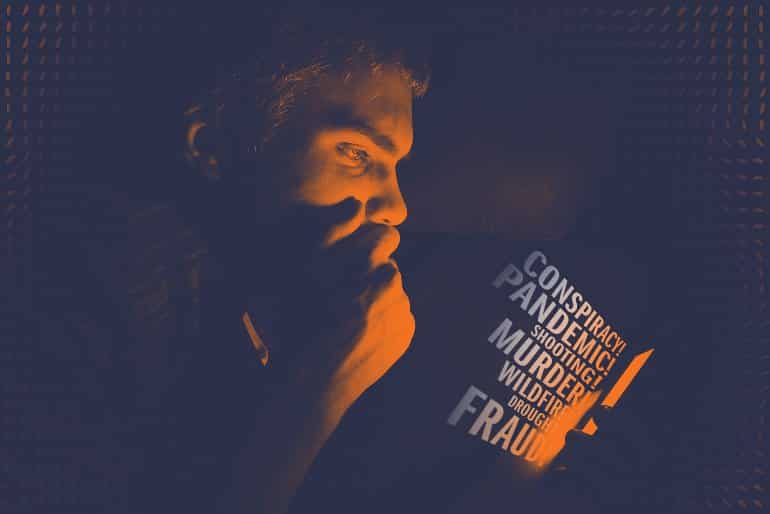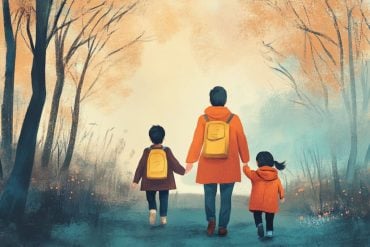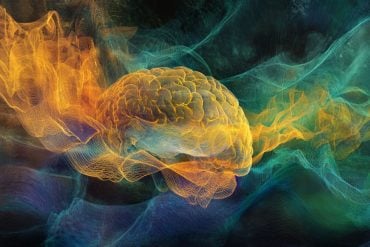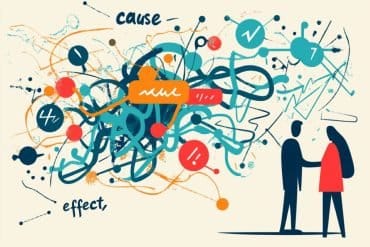Summary: People are reporting an uptick in personal “doomscrolling” activities online. Marked by consuming excessive amounts of negative content during one sitting, doomscrolling may be linked to anxiety. Researchers provide suggestions about how people can halt doomscrolling activities.
Source: University of Virginia
Dictionary.com recently added hundreds of new words to its catalog, many of them capturing the zeitgeist of 2020, the year COVID-19 overtook the United States. One of those new words is “doomscrolling”: the act of consuming large quantities of negative online news in a sitting.
As you might imagine, mental health experts say doomscrolling is not good for you. UVA Today reached out to Bethany Teachman, a University of Virginia professor of psychology and an expert in managing anxiety, who leads the Program for Anxiety, Cognition and Treatment Lab.
We had lots of questions for her about this new phenomenon and are happy to say that she has lots of helpful answers. Read on.
Q. Why do people do doomscroll?
A. This time has been filled with tremendous uncertainty – COVID-19 risk, vaccines, racial justice, the economy, politics, climate, the health of those we love – we have enormous unanswered questions in almost every critical sphere of life. With these unknowns comes a natural desire to resolve the uncertainty, so we seek information.
There is a healthy side to this information-seeking that helps us to know what precautions we need to take during this time of elevated threat. Yet there is clearly also an unhealthy side that can leave us constantly on edge and worried we will miss the critical piece of information that will keep us safe and give us the answers we crave.
Of course, there is no one magic piece of information, news story, or Facebook post. Instead, we have to learn to tolerate the uncertainty.
Q. Are certain personalities more predisposed to this behavior?
A. We don’t have all the answers to who is spending hours a day during the pandemic doomscrolling, but we can infer from other research that people who are vulnerable to anxiety are going to be especially likely to fall into this cycle. This is because anxiety is associated with a bias to pay extra attention to negative information.
Anxious individuals quickly orient to negative cues, so threatening headlines capture attention rapidly, and they find it hard to disengage once they are reading negative information.
This pattern can reinforce anxious individuals’ sense that the world is a dangerous place and they must be extra vigilant for signs of danger, which of course can lead to more doomscrolling in an endless cycle of monitoring for threat and trying to find answers to questions when those answers don’t really exist.
Q. How does doomscrolling affect mental health?
A. There is nothing wrong with seeking information and staying informed, but when a person gets caught in hours and hours of reading negative stories, it can give an exaggerated sense of threat and increase the feelings of danger and vulnerability.
We know, for instance, from past times of trauma and crises that individuals who engage in extended media consumption tied to the trauma are more likely to develop later mental health problems, like post-traumatic stress disorder, anxiety and depressive disorders, compared to individuals who place limits on their negative media consumption.
It is, however, important to distinguish between doomscrolling and other social media and news consumption. Spending time online has provided an important way for people to stay at least virtually connected when they are not able to physically connect. While we wouldn’t want children or anyone else spending their whole day on social media, the research suggests there is not a strong, reliable association between spending time on social media and negative mental health.
Rather, it depends on the role it is playing for the person – if time on social media is generating a lot of envy or anxiety, it is likely not helpful, but if it is supporting connections and helping a person gather reliable, balanced information, it can serve a positive function. So, it can be helpful to monitor how you (or your family members) feel after spending time online and track the impact it has on your mood.
The other big issue to consider tied to the negative impact of doomscrolling or other social media use is what valued, healthy activities are not happening because of the extensive time online.

Going outside, getting exercise, actually talking to others, and getting good sleep are all really important right now as our normal routines have been so disrupted. Thus, it’s critical that time online does not take away from meeting those other needs that help us manage our mental health.
Q. The late philosopher Marshall McLuhan, who published pivotal studies on how media affects society and culture, said if you give people too much information, they resort to pattern recognition. Is that theory at play here at all? What are the consequences of being overly informed?
A. Part of the issue is with being selectively informed and not having the information match the needs of the situation. Epidemiologists and infectious disease specialists likely can’t be “overly informed” right now!
They need extensive information to do their jobs effectively, and they are hopefully attending to positive as well as negative information and using objective criteria to evaluate the quality and reliability of the information they consume.
This differs markedly from doomscrolling, in which a person is selectively focusing on negative stories and overweighting information that suggests a possible threat without placing the information in context and having a balanced perspective.
The pattern recognition ties to the heuristics or schemas we use to rapidly process information. While useful, they can easily bias us to quickly categorize information without appreciating its nuance.
For instance, a post that mentions a possible side effect of a vaccine is almost instantly added to the “world is dangerous” mental pile, without considering that the threat may be extremely minimal given the infrequent occurrence of the side effect.
Q. How can people stop doomscrolling? Are there coping strategies you can suggest?
A. I encourage people who are worried about whether they are doomscrolling to track both the time they are spending online reading scary and disturbing news stories and posts, and track the impact that time is having on their mood (e.g., levels of sadness, anxiety, and anger) and sleep. Then set some clear guidelines to try.
For instance, they can decide that they will check the news and social media for 20 to 30 minutes in the morning and 20 to 30 minutes after work/school, but keep it closed at other times. They can also decide not to check past a certain time in the evening so it doesn’t disrupt sleep by keeping them up worrying.
People can try these strategies for a week and see whether their mood and sleep improve. There is not one magic rule to follow – it is likely to require some trial and error to figure out what will work for each person, so monitoring the impact of different strategies is helpful.
About this psychology research news
Source: University of Virginia
Contact: Jane Kelly – University of Virginia
Image: The image is credited to Meredith Michael Smith, University Communications






